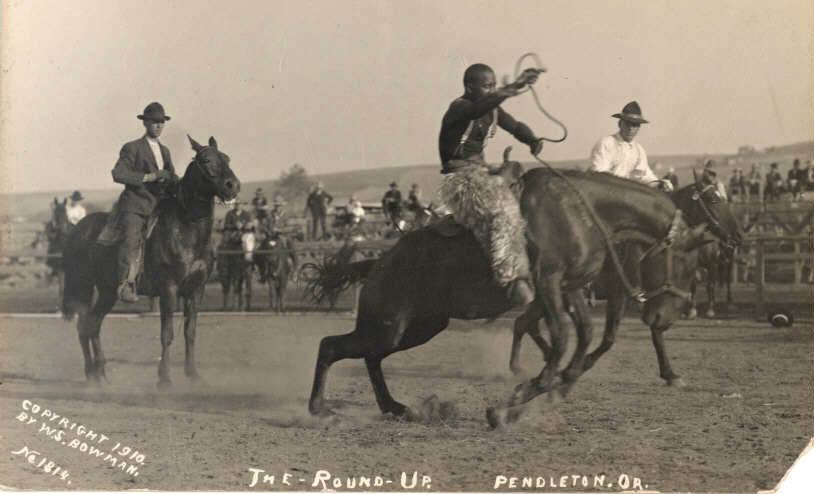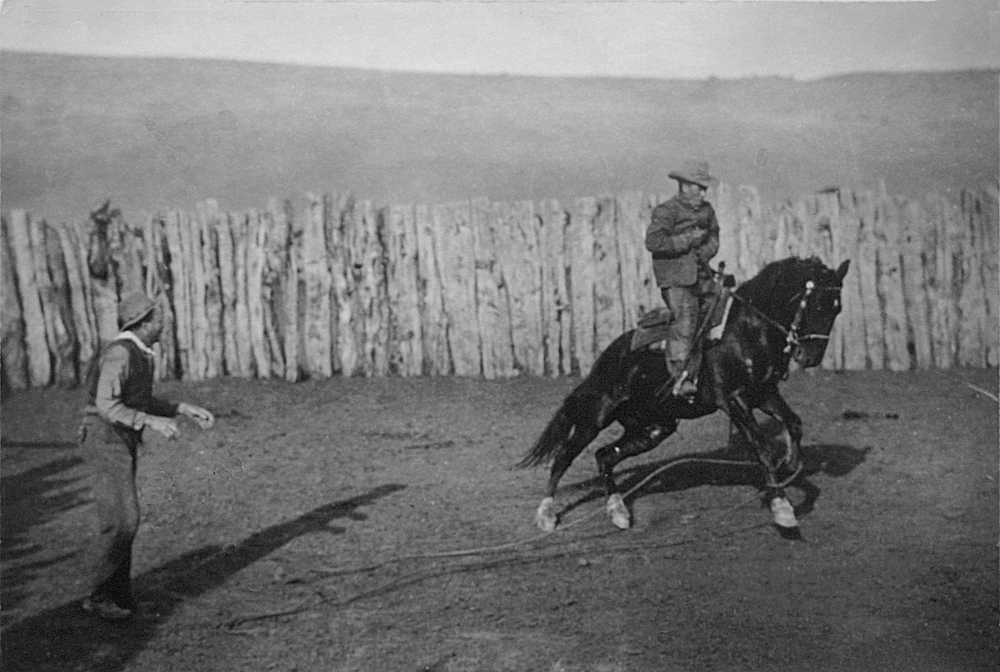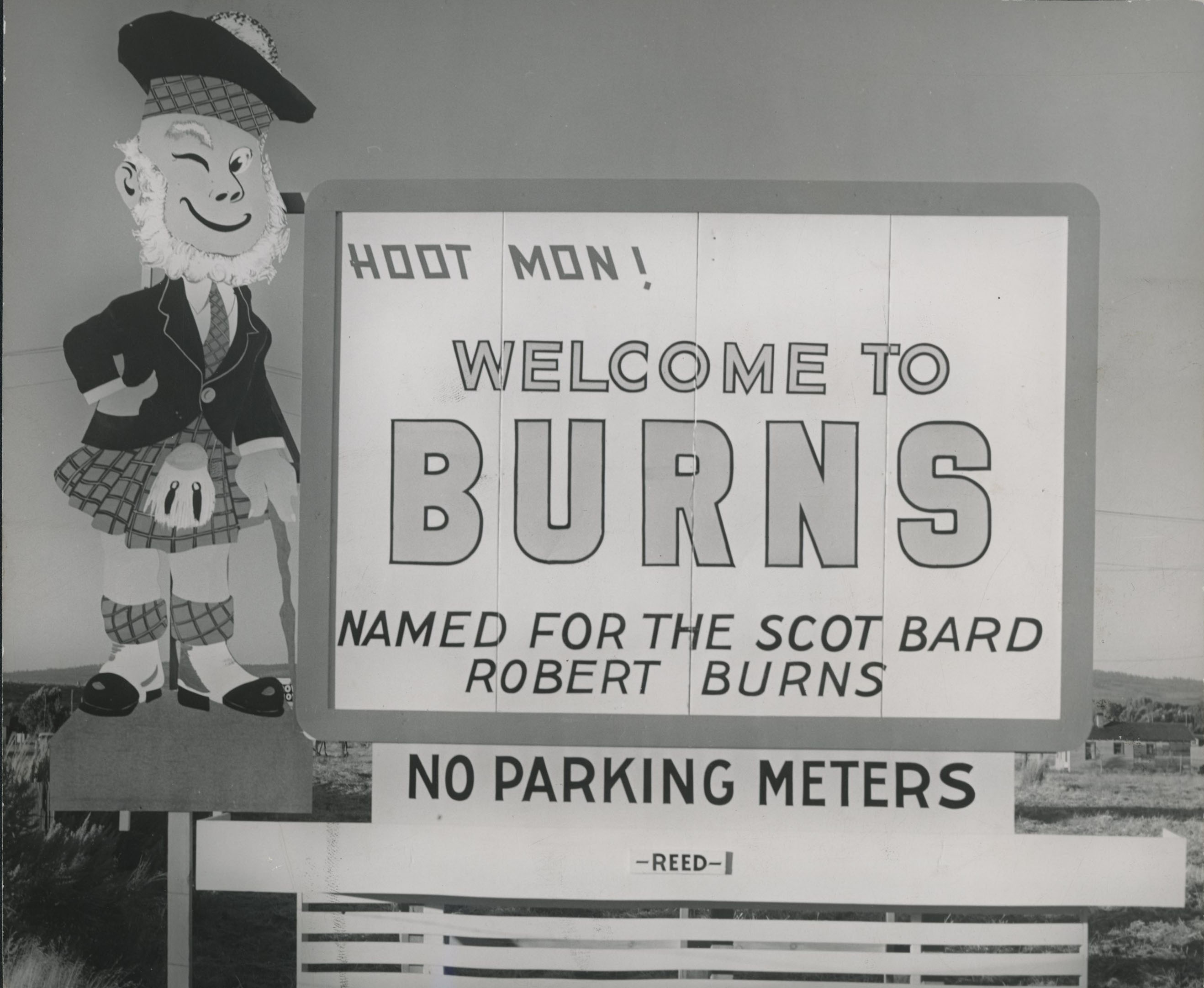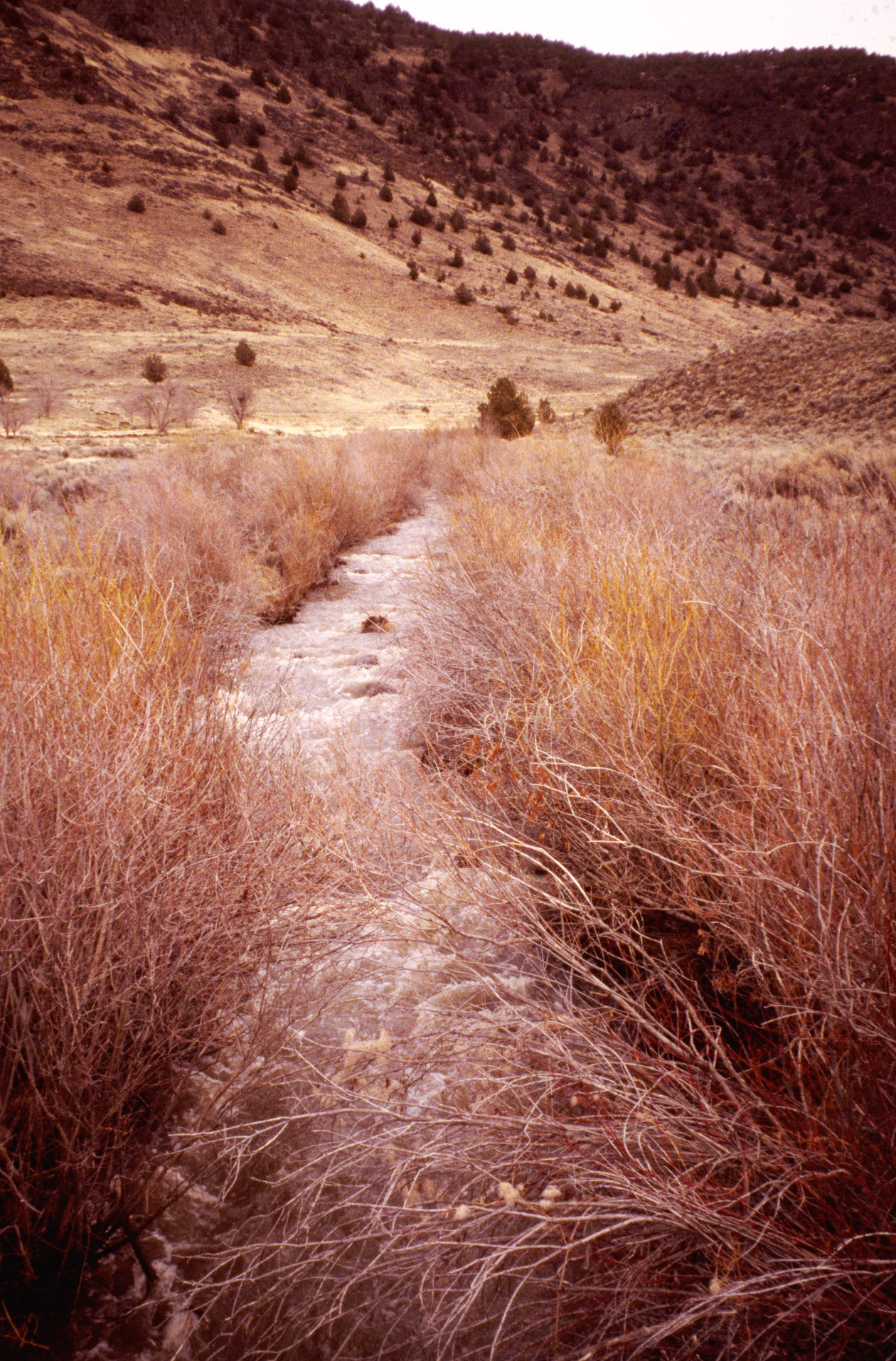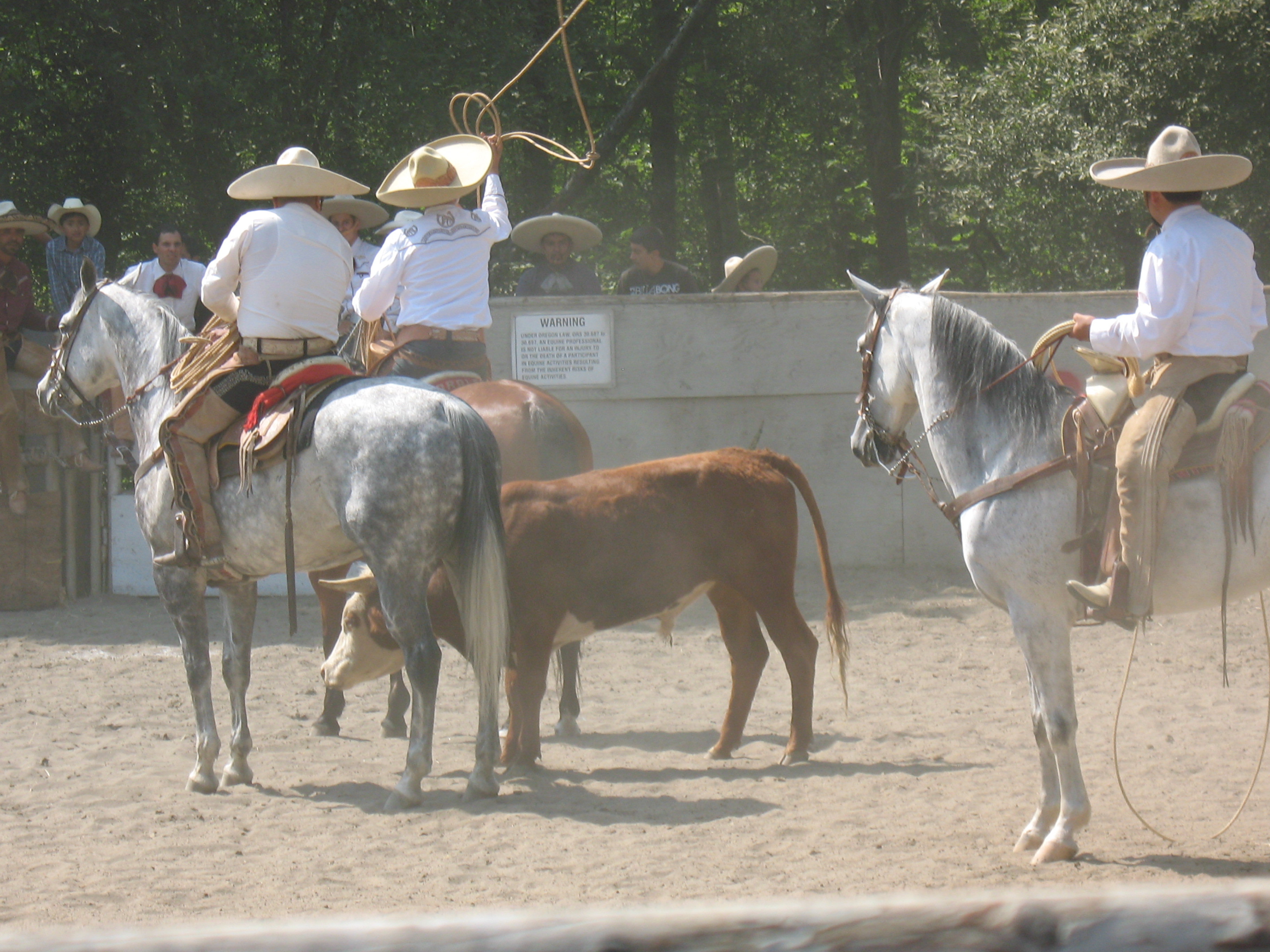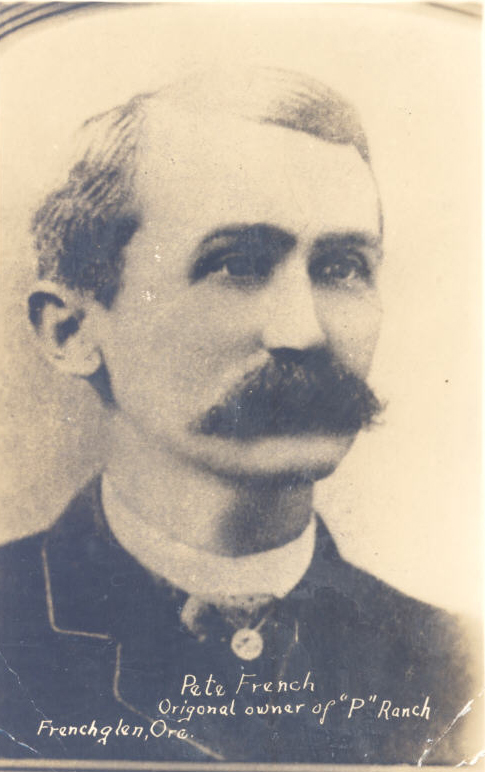Joaquin “Chino” Berdugo was a prominent vaquero leader and stockman in southeast Oregon during the late nineteenth and early twentieth centuries. For over a decade, he served as the foreman and “buckaroo boss” for cattle baron Pete French, managing the skilled vaqueros who worked the cattle and horses on French’s vast ranching empire.
Berdugo was born on October 25, 1850, in San Juan Capistrano, California. He was of Mexican descent, described as tall, dark-skinned, and curly-haired. He arrived in Grant County (now Harney County) by 1881 (and possibly as early as 1872) and became a key figure at French’s P Ranch. As foreman, he supervised the ranch’s vaqueros, known for their exceptional skills in horsemanship, herding, and roping. The term buckaroo, a regional term used throughout the American Pacific West, is derived from the Spanish word vaquero.
Many vaqueros led transient lives in order to take advantage of work opportunities, but Berdugo settled permanently in Oregon. In the 1890s, he homesteaded an 800-acre ranch in the Catlow Valley and established businesses in Burns. In 1901, he co-owned the Red Front Livery, Feed, and Sale Stable, which provided high-quality horses and equipment. In 1917, he purchased the Star Hotel in Burns, converting it into a rooming house. He sold it in 1926 to Felix and Cecilia Urizar, who converted it into Burns’ first Basque boarding house.
In 1914, Berdugo married Clara Fleck in Winnemucca, Nevada. She died in 1921, and the couple had no children, though his nephew, Augustine Gilbert, lived nearby in the Catlow Valley. Berdugo was deeply involved in his community. In 1914, he co-chaired a Fourth of July celebration in the new settlement of Catlow, and supported the construction of a community hall. His support for dry farmers in the Catlow Valley inspired them to name a small community about ten miles south of Frenchglen in his honor. Like many dry-land farming communities, Berdugo, Oregon, was short lived; its post office closed two years after its 1915 establishment.
Berdugo continued ranching until 1930, living in his later years with the Ennis Gardner family, who helped him with his cattle business. He frequently visited Burns, where newspapers noted his meetings with old friends. Berdugo died on December 15, 1931, from pneumonia following surgery. He is buried in Burns.
-
![]()
Joaquin "Chino" Berdugo Portrait.
Courtesy Claire McGill Luce Western History Room, Harney County Historical Museum, 002.015.201 -
![]()
Portrait of Joaquin (Chino) Berdugo (on right) and Unidentified man.
Courtesy Claire McGill Luce Western History Room, Harney County Historical Museum, 2007.524.1 -
![]()
Assembly of Harney County Pioneers, Chino Berdugo is in the back row, third from the right.
Courtesy Claire McGill Luce Western History Room, Harney County Historical Museum, Edward Gray Collection, 2012.002.033 -
![This rocker was made by Chino Berdugo. The frame is made of willows, and the seat and back are made from woven rawhide. The rawhide portions were restored by Earl "Buck" Miller.]()
Joaquin "Chino" Berdugo's Chair.
This rocker was made by Chino Berdugo. The frame is made of willows, and the seat and back are made from woven rawhide. The rawhide portions were restored by Earl "Buck" Miller. Courtesy Claire McGill Luce Western History Room, Harney County Historical Museum, 016.001.1981 -
![]()
Men on horseback outside a corral in the desert at P Ranch, 1912.
Oregon Historical Society Research Library, Digital Collections, William L. Finley Photographs Collection, OrgLot369_FinleyB0212
Related Entries
-
![Black Cowboys in Oregon]()
Black Cowboys in Oregon
The history of African American cowboys in Oregon begins well past the …
-
Buckaroos
For over a century-and-a-half, buckaroos have done the work on the ranc…
-
![Burns]()
Burns
Located in Oregon’s High Desert, Burns is the county seat of Harney Cou…
-
![Catlow Valley]()
Catlow Valley
Catlow Valley, named for nineteenth-century cattle rancher John Catlow,…
-
Charrería
Charrería is a Mexican sport that involves skillful roping, talented ho…
-
![John William "Pete" French (1849-1897)]()
John William "Pete" French (1849-1897)
Peter (or Pete) French was a stockman of near-legendary status who ran …
-
![Latinos in Oregon]()
Latinos in Oregon
The arrival of Latinos in Oregon began with Spanish explorations in the…
Related Historical Records
Map This on the Oregon History WayFinder
The Oregon History Wayfinder is an interactive map that identifies significant places, people, and events in Oregon history.
Further Reading
Gonzales-Berry, Erlinda and Marcela Mendoza. Mexicanos in Oregon: Their Stories, Their Lives. Corvallis, Ore.: Oregon State University Press, 2010.
Jackson, Royal and Jennifer Lee. Harney County: An Historical Inventory. Burns, Ore.: Gail Graphics for the Harney County Historical Society, 1978.
“’Chino’ Berdugo: Old Time Vaquero Passes Tuesday.” Burns Times-Herald, December 18, 1931.






